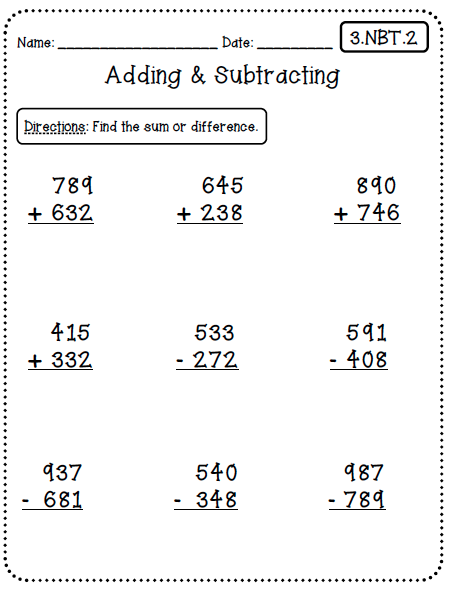Unlocking Math: A Guide to Common Core Grade 3
What if math could be less about memorization and more about understanding? This is the core idea behind Common Core Grade 3 math standards. It's about building a strong foundation, not just checking off boxes. This guide explores what third-grade math entails under the Common Core, offering insights, practical tips, and resources for parents and educators.
Common Core State Standards for Mathematics in third grade focus on developing a deep understanding of multiplication and division, fractions, place value, and problem-solving. It's a shift from rote learning to conceptual understanding. Students are encouraged to explore different approaches, reason mathematically, and communicate their thinking. This helps them develop a flexible and adaptable approach to math, preparing them for future mathematical challenges.
The Common Core State Standards Initiative emerged from a desire for consistent educational standards across states. Before its implementation, math education varied significantly. The initiative aimed to ensure that students across the country were learning similar concepts at the same grade level, preparing them for college and careers. The standards for third grade were carefully crafted to build upon previous learning and provide a solid platform for future mathematical concepts.
Third-grade math is pivotal in a child's educational journey. It's where foundational skills in multiplication, division, and fractions are laid. A strong grasp of these concepts is essential for success in later grades, where more complex mathematical ideas are built upon these fundamentals. This is why the Common Core emphasizes a deep understanding rather than just memorization.
While the Common Core has brought many positive changes, it has also faced its share of criticism. Some argue that it’s too rigorous or that it limits teacher flexibility. Others express concerns about the emphasis on standardized testing. Understanding these challenges is essential for navigating the landscape of third-grade math education effectively.
One key aspect of third-grade Common Core math is understanding fractions as numbers. Students learn to represent fractions on a number line, compare fractions, and recognize equivalent fractions. For example, they learn that 1/2 is the same as 2/4. They also explore place value up to 1,000, learning to round numbers to the nearest ten or hundred.
Benefits of the Common Core approach include fostering critical thinking, encouraging problem-solving skills, and promoting mathematical reasoning. For instance, instead of simply memorizing multiplication facts, students might explore different strategies to solve multiplication problems, such as using arrays or repeated addition. This deeper understanding equips them to tackle more complex problems in the future.
An action plan for supporting a third-grader in Common Core math might include regular practice with math facts, engaging with real-world math problems, and encouraging them to explain their thinking. Using visual aids, manipulatives, and online resources can also be beneficial.
Advantages and Disadvantages of Common Core Grade 3 Math
| Advantages | Disadvantages |
|---|---|
| Consistent standards across states | Potential for over-testing |
| Emphasis on deep understanding | Limited teacher flexibility (perceived) |
| Focus on problem-solving | One-size-fits-all approach concerns |
Five Best Practices: 1. Use real-world examples. 2. Encourage discussion and explanation. 3. Incorporate manipulatives. 4. Provide regular practice. 5. Focus on understanding, not just memorization.
Real-world examples: Calculating the total cost of items at a grocery store, measuring ingredients for a recipe, dividing a pizza equally among friends, figuring out the area of a garden plot, determining the time it takes to travel a certain distance.
Challenges and solutions: Difficulty with multiplication – Use visual aids and manipulatives. Struggling with fractions – Use fraction bars or number lines. Trouble with word problems – Break down the problem into smaller steps. Lack of motivation – Incorporate games and real-world examples. Anxiety about math – Create a positive and supportive learning environment.
FAQs: What are the main topics covered in third-grade math? How can I help my child with fractions? What resources are available for Common Core math practice? What are some strategies for solving word problems? How can I make math fun for my child? What if my child is struggling with math? How can I communicate with my child's teacher about their math progress? What are the long-term benefits of mastering third-grade math concepts?
Tips and tricks: Use flashcards for math facts. Play math games online or with physical manipulatives. Incorporate math into everyday activities, like cooking or shopping. Encourage your child to explain their thinking process. Celebrate small successes and focus on progress rather than perfection.
In conclusion, Common Core Grade 3 math provides a crucial foundation for future mathematical learning. By emphasizing deep understanding, problem-solving, and mathematical reasoning, it equips students with the skills they need to succeed in higher-level math. While challenges exist, the benefits of mastering these concepts are undeniable. By embracing the principles of the Common Core and actively engaging with your child's learning journey, you can empower them to develop a strong and lasting love for mathematics. This journey requires patience, understanding, and a focus on fostering a growth mindset. Embracing these principles will not only help children succeed in third-grade math but also instill in them a lifelong love of learning and problem-solving.
Navigating grief with compassion your guide to legacy funeral home cardston ab
Unleash your inner buccaneer a deep dive into fantasy pirate crew art
Unlock your rides hidden strength decoding towing capacity by vin













